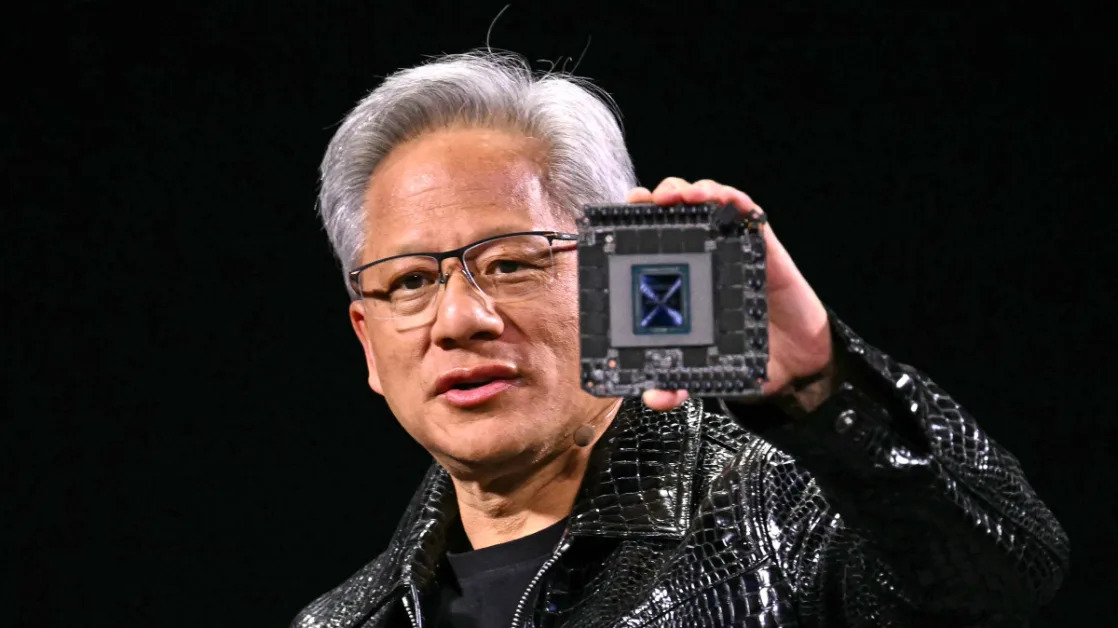
You can't stop progress. You can only hope to benefit from it.
Once upon a time, in the hazy past of January 1996, oil giant ExxonMobil (NYSE: XOM) was the first stock worth $100 billion. One year later, soft drink brewer Coca-Cola (NYSE: KO) had jumped ahead to $131 billion and there were three stocks above the $100 billion level. By the end of the 20th century, that club had 19 members and Microsoft (NASDAQ: MSFT) led the way with a $604 billion market footprint.
These days, the market is exploring another benchmark. The first trillion-dollar stocks popped up in 2019. One coronavirus pandemic, one inflation crisis, and one artificial intelligence (AI) surge later, six companies have passed the trillion-dollar marker. Soon enough, you'll see lots and lots of trillion-dollar market caps. The turn of the millennium wasn't very long ago, and the group of $100 billion stocks is already 120 names strong.
I'm pretty sure that networking and connectivity semiconductors guru Broadcom (NASDAQ: AVGO) will join the trillion-dollar society before 2030. In fact, it could get there in just a couple of years.
Broadcom's trillion-dollar prospects, by the numbers
Honestly, Broadcom has an easy path to $1 trillion. It's already one of the largest names on the market with a $730 billion market cap, so it only needs a light push to cross that goal line.
From a purely mathematical point of view, there are several reasons to believe that Broadcom will get there -- and soon.
Six percent is far below the stock market's long-term averages, and a long way behind Broadcom's proven growth habits. By hook, by crook, and perhaps including a splashy buyout or two, Broadcom should be able to meet my trillion-dollar target long before 2030.
Broadcom's growth drivers
That's the basic math. What about the practical side of Broadcom's potential for growth?
The company has many balls in the air. Connected devices are everywhere nowadays, like yellow cabs in New York or platform shoes at the disco. I mean, they're everywhere -- phones, cars, laundry machines, step trackers, and dog collars are sending data to the cloud, and I'm just scratching the surface with that list. As a leading provider of the chips that make these connections, Broadcom's growth looks unstoppable.
And that's just the foundation of this company's growth story. Broadcom is also discussing AI chip designs with ChatGPT maker OpenAI and TikTok owner ByteDance. Custom AI processors tend to come with lower profit margins, but they could also provide a robust revenue stream if large clients continue to seek Broadcom's expertise.
Valuation concerns and market risk
The biggest potential pothole in the road ahead is valuation concerns.
Broadcom's stock is trading near multiyear highs in terms of price-to-free-cash-flow, price-to-sales, or price-to-earnings ratios. Bears can make the argument that Broadcom's AI prospects and recent revenue growth have been priced into the stock already. If the stock is priced for perfection, any misstep could result in a painful price drop and take Broadcom further away from the dramatic trillion-dollar flag.
Value-seeking investors shouldn't look too long at Broadcom's richly priced stock. This is an idea for growth-oriented investors who don't mind a lofty price and elevated market risk as long as the company is able to grow its revenue streams in the long run.
So the road ahead could be quite bumpy, depending on how the global economy and the AI surge play out. Broadcom's arrival at the trillion-dollar goal may be delayed. Even so, I expect it to reach that line well before 2030, even if it goes through a few sharp price corrections first. So you should check your risk tolerance, perhaps grab a few Broadcom shares, and then buckle up for a roller-coaster ride to a trillion-dollar market cap -- and beyond. It's not every investor's cup of wireless signals, but a promising growth investment for those who dare.
Before you buy stock in Broadcom, consider this:





